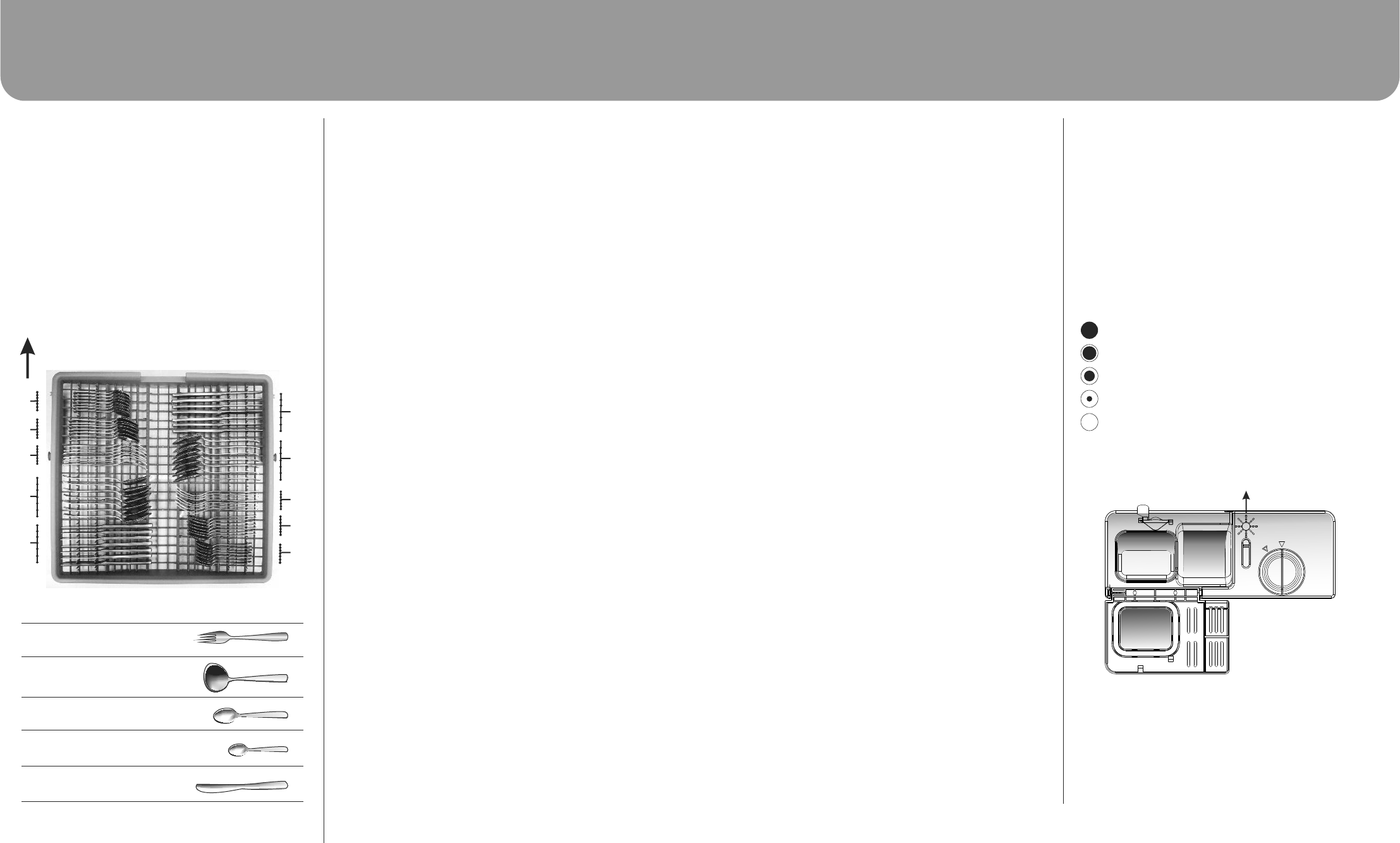
Using Your Dishwasher
Page 11Page 18
Using Your Dishwasher
Damage to glassware and other dishes
Possible Causes
Type of glass or manufacturing process. Chemical
Ÿ
composition of detergent.
Water temperature and duration of dishwasher
Ÿ
program.
Suggested remedy:
Use glassware or porcelain dishes that have been
Ÿ
marked dishwasher-proof by the manufacturer
Use a mild detergent that is described as kind of
Ÿ
dishes If necessary, seek further information from
detergent manufacturers.
Select a program with as low a temperature.
Ÿ
To prevent damage, take glass and cutlery out of
Ÿ
the dishwasher as soon as possible after the
program has ended. as possible after the program
has ended.
Cutlery Basket
Cutlery should be placed in the cutlery rack
separately from each other in the appropriate
positions shown below. Make sure the utensils do
not nest together, this may cause bad performance.
For a top quality clean, place the silverware in the
basket making sure that:
They do not nest together.
Ÿ
Silverware is placed with the male face up.
Ÿ
Long utensils in the middle.
Ÿ
Teaspoons4
Soup spoons2
Forks
1
Knives
5
3 Dessert spoons
IN
1
1
2
2
3
3
4
4
5
5
BEFORE STARTING THE DISHWASHER
The following things should be checked before
starting the dishwasher:
1. That the dishwasher is level and fixed properly.
2. That the inlet valve is open .
3. There is no leakage at the connections of the
conducts.
4. The wires are tightly connected.
5. The power is switched on.
6. The inlet and drain hoses are not knotted or kinked.
7. All packing & print materials should be taken out of
the dishwasher.
PRIOR TO USING FOR THE FIRST TIME
Before using your dishwasher for the first time:
Fill the Rinse Aid Dispenser
The rinse aid is released during the final rinse to
prevent water from forming droplets on your dishes,
which can leave spots and streaks. It also improves
drying by allowing water to roll off the dishes. Your
dishwasher is designed to use liquid rinse aids. The
rinse aid dispenser is located inside the door next to
the detergent dispenser. To fill the dispenser, open the
cap and pour the rinse aid into the dispenser until the
level indicator turns completely black. The volume of
the rinse aid container is about 110ml.
Function of the Rinse Aid
Rinse aid is automatically added during the last rinse,
ensuring thorough rinsing, and spot and streak free
drying.
WARNING!
Only use branded rinse aid for dishwashers. Never fill
the rinse aid dispenser with any other substances
(e.g. Dishwasher cleaning agent, liquid detergent).
This would damage the appliance.
As the rinse aid diminishes, the size of the black dot
on the rinse aid level indicator changes, as illustrated
below.
Full
3/4 Full
1/2 Full
1/4 Full (Should refill to eliminate spotting)
Empty
C (Rinse-Aid indicator)
When to refill the Rinse Aid Dispenser
If there is no rinse-aid warning light in the control
panel, you can judge the amount of rinse-aid by the
colour of the optical level indicator "C" located next
to the cap. When the rinse-aid container is full, the
whole indicator will be dark. As the rinse-aid
diminishes, the size of the dark dot decreases. You
should never let the rinse aid get below 1/4 full.
















